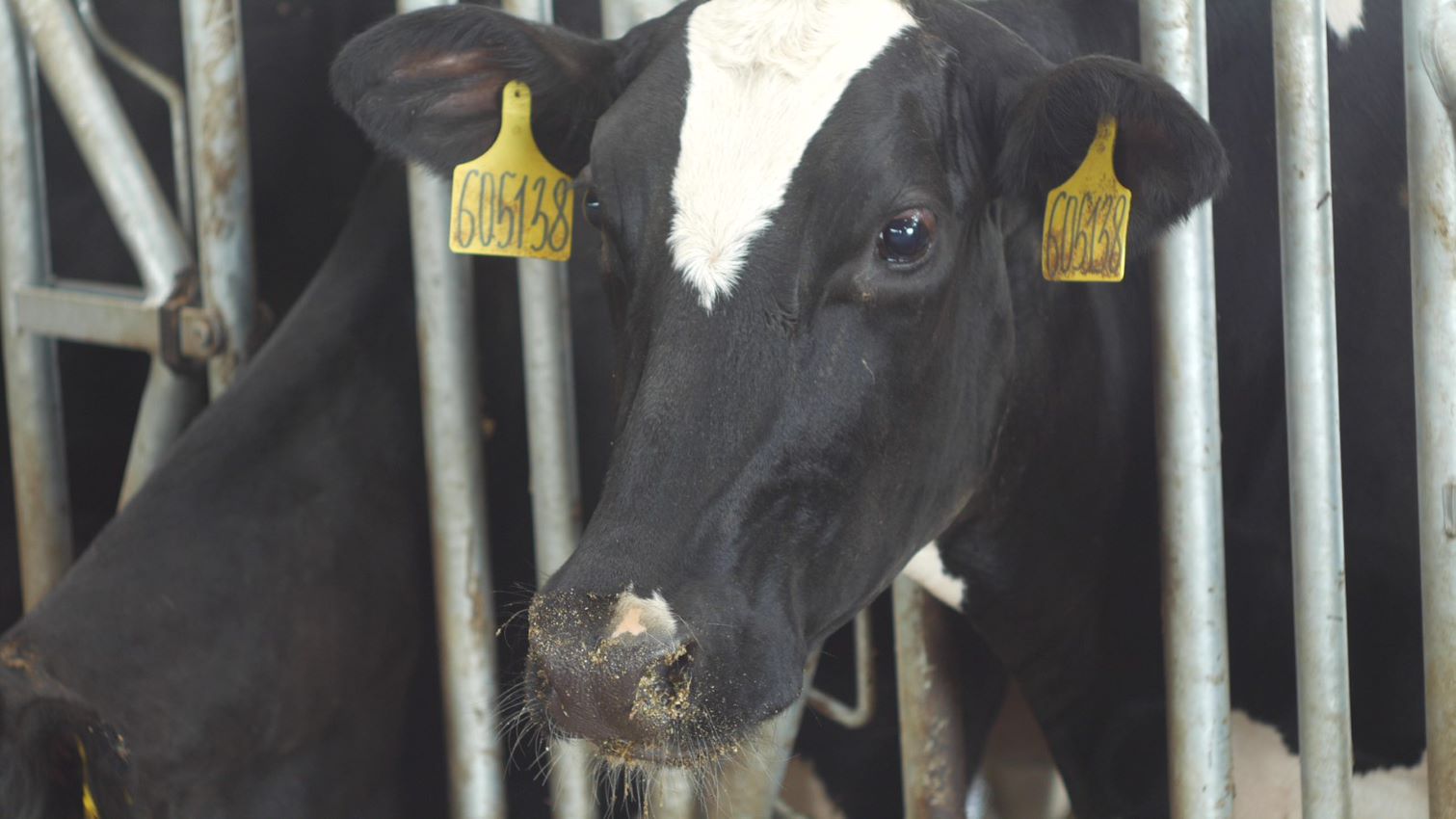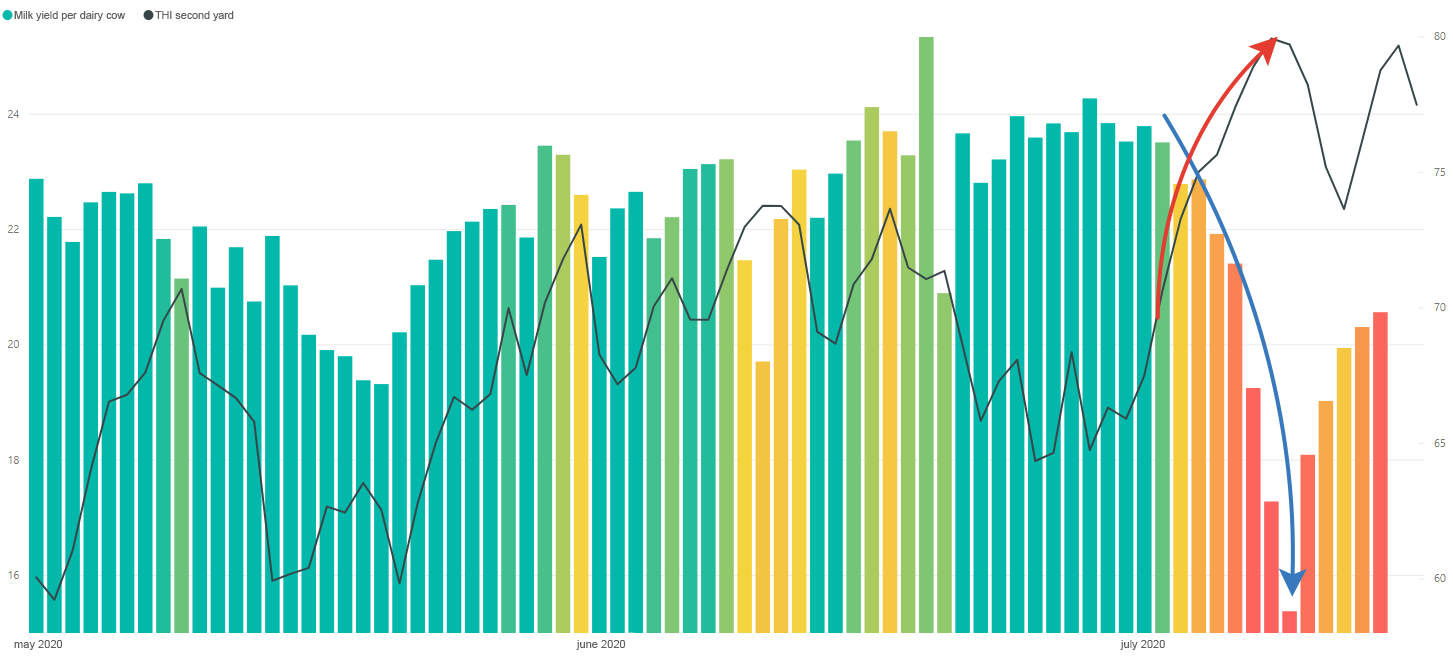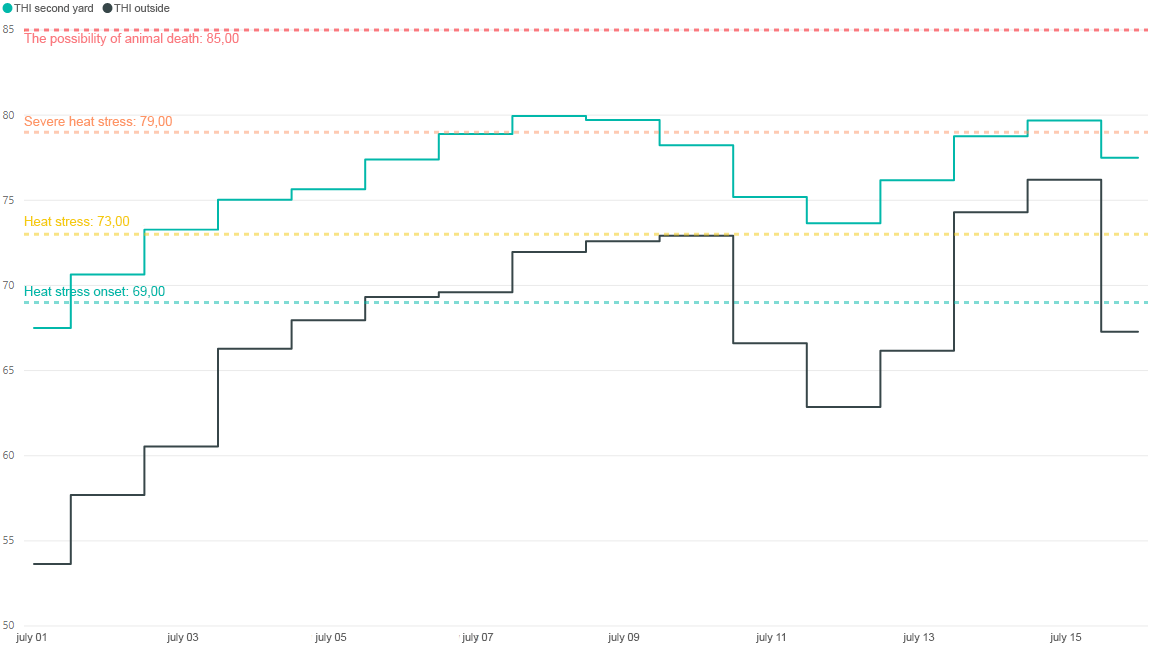Continued research into the effect of THI on milk yield

Let's continue our research on the effect of THI on milk yield. We settled on the fact that at normal THI values (below 69), our client's milk yield per dairy cow should have reached the level of 25-26 kg. In reality, due to the THI values reaching the values corresponding to heat stress in cows (THI> = 73) milk yield was 22-23 kg having decreased at the moment after vaccination below 20 kg.
Let's see what happened next. On June 11 and 12 despite the high THI values milk yield increased from 19.71 kg to 23 kg due to the recovery of animals after vaccination. In the context of a further decrease in THI milk yield reached 24 kg by June 16 and remained at this level until the beginning of July. From the beginning of July a sharp increase in THI values began, on July 3 the value of 73 was exceeded, which corresponds to heat stress in animals and by July 8THI exceeded the value 79 - severe heat stress. As a result, all this led to a sharp decrease in milk yield, on July 9 milk yield amounted to 15.38 kg decreasing by a third compared to milk yield at normal THI values. Later, with a decrease in THI to a level of 75 - heat stress, milk yield recovered to 20 kg, remaining significantly lower than milk yield at normal THI values (a decrease of about 20%).

Thus, it can be concluded that heat stress has a significant effect on the productivity of dairy farming. Keeping animals under heat stress (THI values ranging from 73 to 79) causes a 20% decrease in milk yield. Severe heat stress (THI values ranging from 79 to 85) reduces milk yield by 40%. Prolonged exposure of animals with THI values above 85 can lead to death.
Based on the results of the study, the client was recommended to install a forced ventilation system in the barns, ventilators for blowing animals, and also to transfer some of the animals to a free barn, thereby reducing the humidity in the barns. Some of the recommendations were taken into account (dispersal of animals and increased ventilation), which made it possible to somewhat reduce the THI value. In particular, on July 15, the external THI value significantly exceeded the values of the previous highs on July 9 and 10, but the THI in the barn on July 15 did not exceed the values on July 9 and 10. Without the measures taken THI values could have reached 85 which could lead to the death of some animals.
It should also be noted that during the extreme drop in milk yield on July 8-10 due to high THI values in the barn (severe heat stress), the THI values outside did not reach the level of heat stress, remaining in the zone of onset of heat stress. This is due to the significantly higher humidity inside the barn due to the physiological evaporation of moisture by the animals and the lack of effective ventilation.

The continuation of this research will be published in the following articles.
Still have questions?
Contact us and find out more
